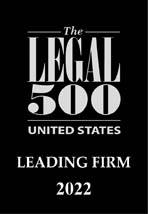The US Court of Appeals for the Federal Circuit reversed the Patent Trial & Appeal Board’s final determination that challenged patent claims were not unpatentable, finding that the Board’s decision relied on an erroneous implicit claim construction. Sigray, Inc. v. Carl Zeiss X-Ray Microscopy, Inc., Case No. 23-2211 (Fed. Cir. May 23, 2025) (Dyk, Prost, JJ.; Goldberg, Chief Distr. J., sitting by designation).
Zeiss owns a patent related to X-ray imaging systems that incorporate projection magnification. Sigray filed a petition requesting inter partes review (IPR) of all claims in the patent. After institution, the Board issued its final written decision, which declined to hold any of the challenged claims unpatentable. Sigray appealed.
On appeal, Sigray argued that the claims were unpatentable based on a single prior art reference, Jorgensen. The Jorgensen reference “describes a system that uses an X-ray source to generate an X-ray beam, which then passes through a sample before being received by a detector.” Sigray argued that Jorgensen anticipated or rendered the challenged claims obvious. The parties agreed that Jorgensen explicitly disclosed all the limitations of the independent claim except for one reading “a magnification of the projection X ray stage . . . between 1 and 10 times.”
The parties’ arguments centered on whether the magnification limitation was inherently disclosed in Jorgensen. The Board concluded that “viewing the record as a whole, . . . [Sigray] has not shown persuasively that Jorgensen inherently discloses projection magnification within the claimed range. Sigray argued, and the Federal Circuit agreed, that the Board’s findings incorrectly relied on a flawed understanding of the claimed range. In Sigray’s view, “the Board implicitly and incorrectly construed the limitation ‘between 1 and 10’ to exclude unspecified, small divergence resulting in projection magnifications only slightly greater than 1.” This was illustrated by the Board’s determination that Sigray “failed to show that the . . . X-ray beam in Jorgensen diverges enough to result in projection magnification between 1 and 10 times.”
The Federal Circuit found that the Board’s use of the term “enough” indicated that the evidence it relied on supported a finding of some divergence in the X-ray beams. Because the beams were not completely parallel, the Court reasoned that some magnification necessarily resulted, and that even a miniscule amount (as disclosed in the prior art) fell within the claimed magnification range of 1 to 10. Since the Board made only one evidence-supported finding relevant to anticipation, the Court reversed on the independent claim and two dependent claims without remand. However, the Court remanded the case to the Board to determine whether the three remaining challenged claims, which recited further material limitations, would have been obvious.
read more

 Subscribe
Subscribe


